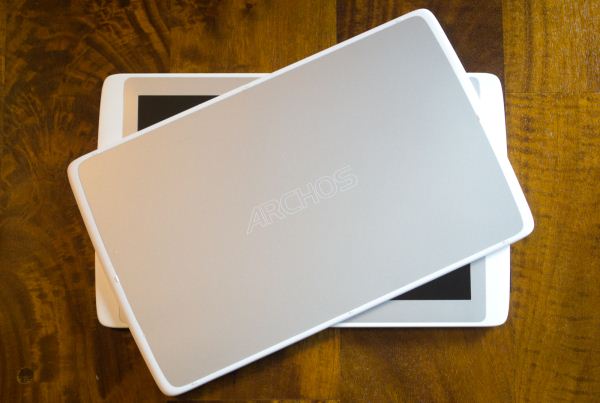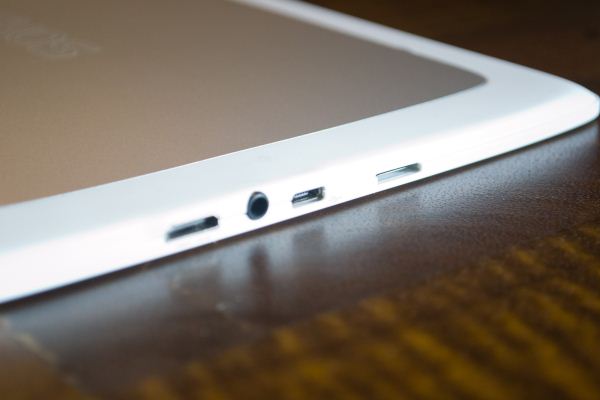The Archos 101 XS Review: Prettier, Faster, So Much Better
by Jason Inofuentes on August 22, 2012 12:15 PM ESTWhen Apple and Samsung were just in the planning stages of their respective tablets, Archos was already knee deep in it. Android was still just an idea Andy Rubin hadn’t quite fully fleshed out, when Archos introduced the Archos 5, a 3G equipped Portable Media Player with a browser and the kind of codec support that many of today's popular tablets can’t match. Tablets seemed like a logical next step for Android, and rumors of an iOS tablet had been brewing since before the iPhone, but it was Archos that made some of the earliest moves into this space. All this to say, minimal market penetration not withstanding, Archos deserves attention because of their longevity and persistence.
We looked at the Archos G9 Turbo devices just a few months ago, and came away . . . impressed. Lofty promises of being “the world’s fastest tablets” haunted Archos to some extent, because the claims were made about a SKU that would take a nearly 8 months to finally see the light of day. In the interim, NVIDIA released its Tegra 3 SoC, in the ASUS Transformer Prime, and brought quad-core tablets into the conversation. We couldn’t quibble too much with Archos claims, though. Through some impressive refinement of the software, their two 1.5 GHz A9 cores were able to outperform almost every other Android tablet on the market, and even the aging SGX540 accompanying those cores found it still had legs (once it was properly clocked). While Archos had gotten the hardware and software right, they’d not done so well in design. The G9s were pedestrian at best. Dark grey, large bezels, plump and plain, these weren’t going to ever be described as pretty. Two out of three ain’t bad, and with pricing that undercut much of the competition, at the expense of refinement, it wasn’t hard to recommend to the media hungry tablet buyer.
Solid internals, and software gets you most of the way there, but what do you do for the follow up? In Archos case they made it prettier. Say hello, to the Archos 101 XS. The entire product line will be referred to as the Gen10 XS, reminding us that this is the 10th generation of Archos tablets. I almost prefer 'Gen10' as a brand than the XS moniker. That said, those two letters do an effective job of describing the new tablets in a few different ways. We’ll start with the most obvious one. Where the G9 was drab and chunky, the XS (think Extra Small) is svelte and much more stylish. The silver on white body is attractive and though not unibody or made from some exotic ‘polycarbonate’ the fact that it’s a matte plastic feels much better to the touch than glossy plastics. The silver trim feels a bit cheaper than the white body, and scratched a bit before I could even get glamour shots done (from what I’m not sure). The design is a great advance over the G9s, and a satisfying departure from the staid designs that generally make it to market. Now, if something could have been done about those bezels.
The assortment of ports on the device is mostly unchanged, the left featuring the bulk of it with microUSB (for data and power), audio, miniHDMI and microSD card access. That microSD slot is a bit tricky; a large enough gap exists around the slot itself so that a careless user could actually slip the SD card between the frame and the body of the reader (yeah, that happened). The power button and activity LED now join the volume button on the right side of the device, and both buttons are quite a bit thinner than their forbears, and a bit squishy for that. The top of the device remains bare, and the back is featureless, which means both the USB slot for the optional 3G stick is gone, as is the kickstand. The bottom now has a set of pogo pins and a couple of magnets, more on those later. The front facing and lone camera remains to the left of the screen along with the mic, while to the right is the single speaker.
| ASUS Tablet Specification Comparison | ||||||
| Archos 101 XS | ASUS Transformer Pad 300 Series | Samsung Galaxy Tab 2 10.1 | ASUS Nexus 7 | |||
| Dimensions | 273 x 170 x 7.9mm | 263 x 180.8 x 9.9mm | 256.6 x 175.3 x 9.7mm | 198.5 x 120 x 10.45mm | ||
| Chassis | Plastic | Plastic | Plastic | Plastic + Rubber back | ||
| Display | 10.1-inch 1280 x 800 MVA | 10.1-inch 1280 x 800 IPS | 10.1-inch 1280 x 800 PLS | 7" 1280 x 800 IPS | ||
| Weight | 600g | 635g | 580.6g | 340g | ||
| Processor |
1.5GHz TI OMAP 4470 (2 x Cortex A9) |
NVIDIA Tegra 3 (T30L - 4 x Cortex A9) |
1.0GHz TI OMAP 4430 (2 x Cortex A9) | 1.3 GHz NVIDIA Tegra 3 (T30L - 4 x Cortex A9) | ||
| Memory | 1GB | 1GB | 1GB | 1 GB | ||
| Storage | 16GB + microSD slot | 16GB/32GB + microSD slot | 16GB + microSD slot | 8 GB / 16 GB | ||
| Battery | 25Whr | 22Whr | 26Whr | 16 Whr | ||
| Pricing | $399 | $379/$399 | $399 | $199/$249 | ||
When it hits retail, in mid-September, the XS will come in at $399, including a keyboard case we’ll talk about later. This is a pretty decent amount of kit for a pretty reasonable amount of money. At that price it’s competing with the still available iPad 2, Samsung’s Galaxy Tab 2 10.1” and the ASUS Transformer Pad TF300. We haven’t run the Tab 2 through the ringer, but it shares internals with the inexplicably expensive Motorola Xyboard, so we’ll consider it in the Tab 2’s stead. So, that’s how it looks and how it fits in the market, let’s see how it performs.












44 Comments
View All Comments
Squidward - Wednesday, August 22, 2012 - link
It's not polite to channel the spirit of Steve Jobs.rarson - Wednesday, August 22, 2012 - link
"Unrequiteness?"JasonInofuentes - Thursday, August 23, 2012 - link
I'm not a fanboy. I'm an enthusiast. And not an Archos enthusiast (I've never owned one of their products), I'm a technology enthusiast. All of your bloviations aside, the Archos team has done an excellent job with resources that are, most likely, an order of magnitude smaller than Samsung or ASUS.This isn't the best tablet, and it isn't the worst. And that refrain is spoken about nearly every tablet that crosses our bench. Why aren't we awash with tablet reviews, despite nearly every CE OEM having a full stable of them? Because they mostly fall in the same category: middling. Archos merits more attention precisely because they've done as much, if not more, than their larger competitors.
swaaye - Thursday, August 23, 2012 - link
The Archos G9 tablet user reviews consist of stories of defects and misrepresentations. It's scary.This new tablet is $400, just like the Samsungs and ASUSs. Hopefully the performance and quality is there for that.
jjj - Wednesday, August 22, 2012 - link
Cherrypicking 2 non-GPU benchmarks where it gets stelar results?You guys are just losing credibility and that's all you got to lose.
geddarkstorm - Wednesday, August 22, 2012 - link
Say what? I see Egypt HD, Egypt Classic, Taiji and Hover benchmarks there; all testing the GPU. Egypt HD is especially hard on GPUs. I'm not sure what you're complaining about.kyuu - Wednesday, August 22, 2012 - link
I think he's referring to the Sunspider and Browsermark benchmarks, which for some reason he confusingly called "non-GPU benchmarks".However, I'm not sure what other "non-GPU benchmarks" he's expecting to get covered, or what evidence he has that it scores poorly in other benchmarks.
JasonInofuentes - Thursday, August 23, 2012 - link
Benchmarking is one of the most challenging aspects of working in the mobile space right now. We value those benchmarks that provide useful data, not just another number. Other sites have a strong affinity for benchmarks whose numbers fluctuate wildly and whose value is often limited by tests that have hit a theoretical cap (particularly Vsync caps). Some benchmarks provide a useful data point in the event that performance deviates from our expectations, but otherwise fall perfectly within our expectations.The point is, if I had included all of the performance data that I collected, you would still be no more informed than you are now. Thanks for reading. Cheers.
Jason
americorloliveira - Monday, August 27, 2012 - link
I think it's time to review the scores of the Asus Transformer Infinity because of my constantly give me around 1300 ms on SunSpider and gives over 160,000 in Browsermark, I dont know if it was a firmware update but the values are very different from those in your table. Maybe when you do a review of the Galaxy Note 10.1 also can review the Infinity.Thanks
Spunjji - Thursday, August 23, 2012 - link
Did you read the article?No?
Thought not.